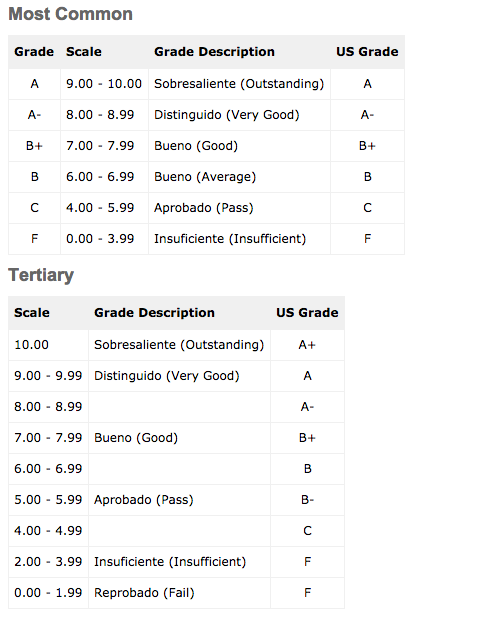Argentina: Argentina Education Profile
2015/09/02
Education System in Argentina
Primary Education
In Argentina the system functionally managed by the Ministry of Education is implemented at national, provincial and federal levels, and by private institutions. The first phase of education Educación General Básica is divided into 3, three-year phases corresponding to junior and senior primary school, and middle school respectively. When this period of mandatory academic education is complete, a student has the choice of studying further or not.
Secondary Education
Secondary education is in the process of being standardized into a 3-year polymodal form that allows students to select their study orientation. This is not yet fully implemented yet, with many schools in larger cities maintaining an academic model that allows for subject specialization only. The are thus 3 broad kinds of secondary schools in Argentina. These are "Bachiller" schools emphasising humanistic studies, "Commercial" schools focusing on economic sciences and everything related to that, and "Escuelas Técnicas" with a preference for technical and scientific education.
Vocational Education
There is a network of vocational schools across the country many of which are associated with the National Technological University. These provide viable alternatives to the secondary school system, for young people wanting to enter more practical occupations.
Tertiary Education
Higher education in Argentina is divided into 3 phases, namely 3-year degrees (teachers and technicians), 4 – 6 year degrees (engineering, medicine, legal) and graduate qualifications. Although tertiary education is theoretically free, hidden costs such as accommodation, transportation, materials and forgoing income make this less than a reality.
Grading System in Argentina

Argentina Credentials
Schooling is free, secular, and compulsory from age 6 to 14. Primary and secondary schools, universities, and other institutions of higher learning are maintained by the government. In addition, there are private schools at all levels. The illiteracy rate, less than 10 per cent, is one of the lowest in Latin America.
There are more than 30 universities in Argentina. The government maintains a number of national universities; the National University of Cordoba, founded in 1613, is the oldest. Most of the private universities are Roman Catholic. There are also specialized colleges and institutes, and schools of art and music.
Together with Uruguay and Chile, Argentina ranks at the top of education indices in Latin America and has the best enrollment ratio. However, the education system suffers from low quality, deep inequality and large differences between the federal states. The province of Buenos Aires is particularly severely disadvantaged by the uneven distribution of financial resources. In the course of implementing the 2005 Law on Education Financing, the government subsequently raised expenditures up to 5.4% in 2007, with the goal of reaching 6% in 2010. The country has a well-articulated system of primary and secondary education, but despite the increased expenditures it is still underfunded. The same holds true for the otherwise well-developed public university system, which has been complemented by a network of private universities since the 1980s. The structures necessary to administer the school system efficiently can only be developed in a few provinces, and the widening quality gap between rich and poor provinces is spawning a disturbing development. Despite shortcomings in reform, the foundations for a modern educational system exist. However, the country is still far from having an independent and elaborate science and technology policy. The majority of national enterprises focus on increasing profit rather than innovation. The wretched state of the economy at the beginning of this decade has resulted in a massive “brain drain” which, in turn, impedes the country’s development chances even further.
In spite of its many problems, Argentina's higher education managed to reach worldwide levels of excellence in the sixties. The Latin American docta can claim three Nobel Prize winners in the sciences: Luis Federico Leloir, Bernardo Houssay and César Milstein the highest number in Latin America surpassing countries economically more developed and populated as Irish or Spain.
Characteristics
Education in Argentina is divided in three phases. The first comprises grades first to ninth, and is called Educación General Básica or EGB (Castilian, "Basic General Education"). EGB is divided in three stages, called ciclos ("cycles"):
- 1. EGB I: 1st, 2nd and 3rd school years
- 2. EGB II: 4th, 5th and 6th school years
- 3. EGB III: 7th, 8th and 9th school years
Once the EGB is completed, the student finishes the mandatory schooling period and can choose to start secondary education, called Polimodal, which usually last two to three more years. EGB is mandatory to all students, although desertion is high in some parts of the country and laws intended to prevent this are rarely enforced.
The third stage is college education.
Primary education
Primary education comprises the first two EGB cycles (grades 1–6). Because of the system that was in place until 1995 (7 years of primary school plus 5 or 6 of secondary school), primary schools used to offer grades 1–7, although most are already converted to accept 8th and 9th, others chose to eliminate 7th grade altogether, forcing the students to complete the 3rd cycle in another institution.
Secondary education
Secondary education in Argentina is called Polimodal ("polymodal", that is, having multiple modes), since it allows the student to choose his/her orientation. Polimodal is not yet obligatory but its completion is a requirement to enter colleges across the nation. Polimodal is usually 3 years of schooling, although some schools have a fourth year.
Conversely to what happened on primary schools, most secondary schools in Argentina contained grades 8th and 9th, plus Polimodal (old secondary) but then started converting to accept also 7th grade students, thus allowing them to keep their same classmates for the whole EGB III cycle.
In December 2006 the Chamber of Deputies of the Argentine Congress approved a new National Education Law restoring the old system of primary followed by secondary education, making secondary education obligatory and a right, and increasing the length of compulsory education to 13 years. The government vowed to put the law in effect gradually, starting in 2007.
College education
There are plenty of public and tuition free through the National universities Argentina's system. Private universities are also abundant, but sometimes they are reserved only to the most affluent students. See University reform in Argentina and List of Argentine universities.
This list includes universities, colleges, vocational schools, and other higher education institutions.
- Argentina News
-
- ISRAEL: Netanyahu to pioneer new diplomatic grounds in Latin America
- ISRAEL: Netanyahu’s Historic Latin American Tour to Highlight Israeli Tech Sector
- ISRAEL: PM Netanyahu leaves on historic visit to Latin America
- AFGHANISTAN: UNWTO: International tourism – strongest half-year results since 2010
- ARGENTINA: ARGENTINA: Country To Resume Pork Imports From The United States
- ARGENTINA: $33.2 billion for transport infrastructure through 2019
- Trending Articles
-
- BOTSWANA: Africa: U.S. State Department To Get Experienced Diplomat in Key Africa Post
- BURUNDI: Burundi: Govt Rejects UN Accusations of Crimes Against Humanity
- CHINA: China Invites 5 Countries As Guests For BRICS Summit
- ARUBA: Director of Tourism Turks and Caicos after Irma: Tourism, visitors, hotels current status
- IRAN: Saudi Arabia denies warming relations with Iran
- ISRAEL: Finance Ministry: Housing market slower in July


















